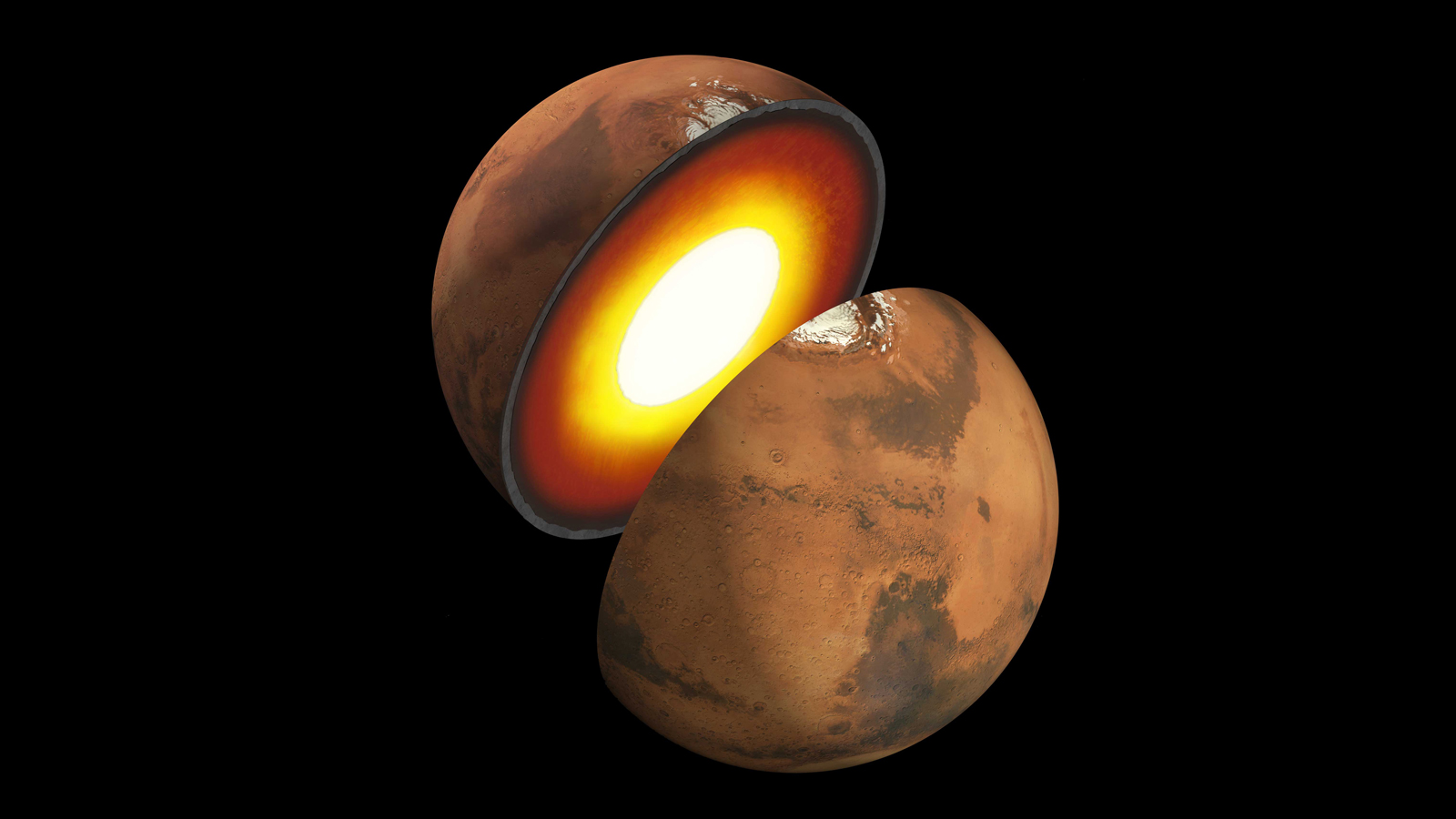'Marsquakes' May Reveal Clues About How the Red Planet Formed
A little shaking on Mars will tell planetary scientists a lot about the Red Planet's structure. NASA's upcoming InSight (Interior Exploration using Seismic Investigations, Geodesy and Heat Transport) lander will study marsquakes to gain more information about the crust, mantle and core of Mars.
The Martian lander, which will leave Earth no earlier than May 5, will carry a seismometer, called SEIS (Seismic Experiment for Interior Structure). While it won't be the first seismometer on Mars, it will be the most accurate, NASA researchers said.
Seismic waves on Mars are generated as rocks shift or break, just like on Earth. The waves will travel at different speeds depending on whether they go through rock, liquid or other geologic material in the Red Planet's insides. [Meet the Next Mars Lander: Getting Insight on NASA's InSight]
"It's a bit like taking the CT scan of a planet," Bruce Banerdt, Insight's principal investigator at NASA's Jet Propulsion Laboratory in California, said in a NASA statement. "We want to use seismology to learn why Mars formed the way it did, and how planets take shape in general."
InSight will likely witness two dozen to several hundred marsquakes during its primary mission, which will last a little over two Earth years after it lands on Nov. 26, 2018. The spacecraft will even detect hits from meteorites slamming into the Martian surface.
On Earth, most seismology measurements are triangulated between several stations. InSight, however, will be the only station returning data on Mars.
"It will be a fuzzy picture at first, but the more quakes we see, the sharper it will get," Banerdt said. "We have to get clever. We can measure how various waves from the same quake bounce off things and hit the station at different times."
Breaking space news, the latest updates on rocket launches, skywatching events and more!
Scientists know that Mars has heavier rocks and minerals in its core and lighter rocks and minerals on its crust. With InSight, they hope to gain more insight into how these materials are layered — and the layers differ between the oven-hot Venus, life-friendly Earth and cold, windswept Mars. By extension, learning about these planets' interiors can give hints as to where life can thrives.
Other NASA missions did planetary seismology. The Viking landers carried seismometers to Mars in the late 1970s, but their placement was unfortunate: The seismometers were on top of the landers and swayed in the wind. "It was a handicapped experiment," Banerdt said. "I joke that we didn't do seismology on Mars — we did it three feet above Mars."
Apollo astronauts also performed seismic testing on the moon in the 1960s and 1970s. Apollo 11, the first moon landing, deployed a passive seismic experiment in 1969 that lasted three weeks. Subsequently, the Apollo 12, 14, 15 and 16 missions deployed more advanced seismic equipment between 1970 and 1972. Data was sent back to Earth until 1977, according to the Lunar and Planetary Institute.
"Astronauts exploded mortar rounds to create vibrations, offering a peek about 328 feet (100 meters) under the surface," NASA officials said in the statement. "They crashed the upper stages of rockets into the moon, producing waves that enabled them to probe its crust. They also detected thousands of genuine moonquakes and meteorite impacts."
InSight has several other instruments to help reveal more about the Martian interior. Its Heat Flow and Physical Properties Probe will bury itself about 16 feet (5 m) under the surface of Mars to measure interior heat. The spacecraft will also carry the Rotation and Interior Structure Experiment to track InSight's location and the wobbles of Mars during the planet's orbit; these positional variations will hint at the Martian core's composition.
"Wind, pressure and temperature sensors will allow scientists to subtract vibrational 'noise' caused by weather," NASA officials added. "Combining all this data will give us the most complete picture of Mars yet."
Follow us @Spacedotcom, Facebook and Google+. Original article on Space.com.

Elizabeth Howell (she/her), Ph.D., was a staff writer in the spaceflight channel between 2022 and 2024 specializing in Canadian space news. She was contributing writer for Space.com for 10 years from 2012 to 2024. Elizabeth's reporting includes multiple exclusives with the White House, leading world coverage about a lost-and-found space tomato on the International Space Station, witnessing five human spaceflight launches on two continents, flying parabolic, working inside a spacesuit, and participating in a simulated Mars mission. Her latest book, "Why Am I Taller?" (ECW Press, 2022) is co-written with astronaut Dave Williams.

